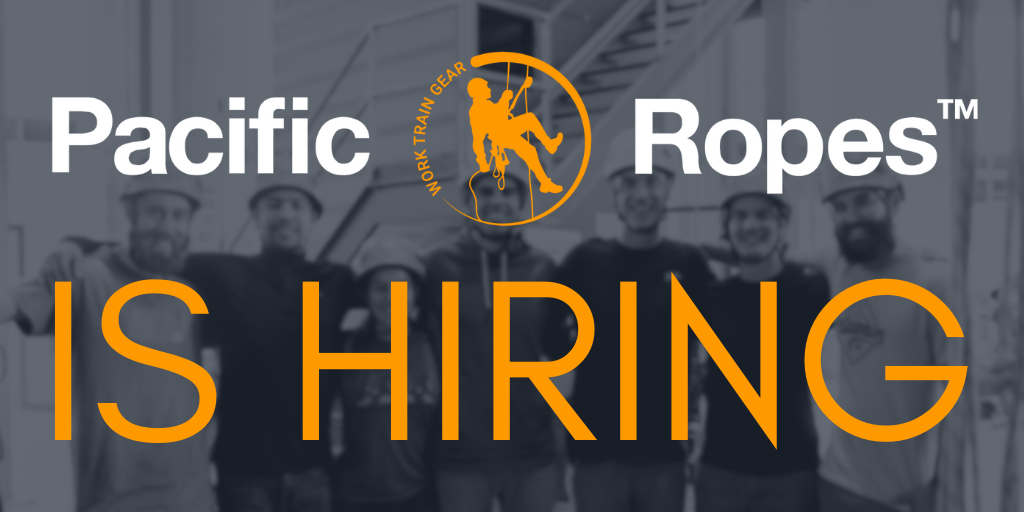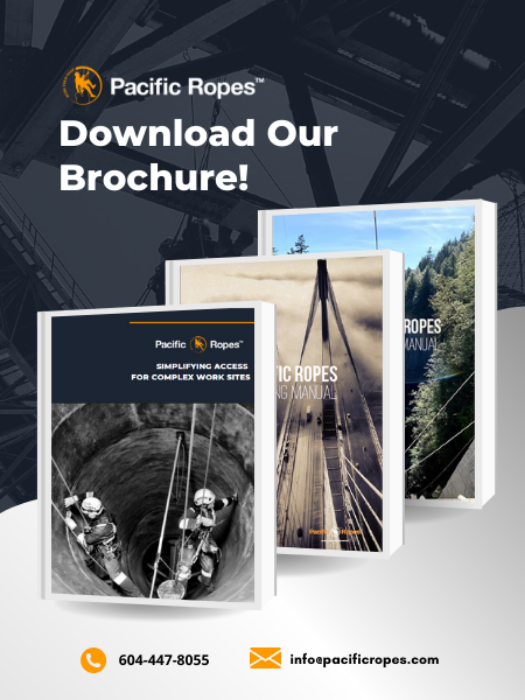**DISCLAIMER: This is not the official WorksafeBC website. The posts below are merely our interpretation and not official WorksafeBC regulation. To make sure you comply, please visit https://www.worksafebc.com/en.
We get many questions from BC companies who aren't sure if they are required to follow Part 34-Rope Access when working at height. This is because traditionally, before Part 34 came into existence in February 2015, working at height would fall under Part 11-Fall Protection or Part 13-Ladders, Scaffolds and Temporary Work Platforms. If you have ever used a Bosun Chair, you would be familiar with Part 13 as this is the part of the regulation that Bosun chair falls into. Because Part 13 has been around longer and referenced more, many companies still believe that working on rope falls under Part 13 and that they are exempt from Part 34. Below is a quick guide on how to determine if your line of work falls under Part 13 or Part 34.
Do you use a rope access system?
- You wear a sit harness or a full body harness.
- Your harness is connected to ropes by lanyards, and connecting equipment such as carabiners and maillons.
- Your ropes are attached to the structure via anchors. There are two ropes, each secured separately to the anchors. One rope is used for access, and the other is a safety line.
- You use ascenders, descenders, belay devices, back up devices, and fall arresters to help you maneuver up and/or down the ropes.
If you use a bosun chair in combination with any of the above, you must follow Part 34 for rope access.
What are the definitions of the terms used in defining a rope access system?
- Anchor-equipment used to secure parts the whole rope access system to a structure. Ex. structure could be a building, tree, rock, or vehicle
- Full body harness-this is a body support device. It consists of connected straps that are designed to distribute the forces that result from being suspended or from falling at height. The straps go over your thighs, shoulders, and pelvis areas. A full body harness will also have features that allow it to connect to ropes and lanyards.
- Lanyard-A flexible length of rope that is used to connect the harness to other parts of the rope access system.
- Rope-A length of cord or webbing made of parallel, twisted, or braided synthetic fibres or steel wire.
- Rope Access-This is the technique used to provide a person with access to and from a work location. When using rope access you are suspended at height and if trained and used properly, prevents you from falling.
- Maximum arrest force, clearance: this refers to the “peak shock load that a rope access system imposes on the body of a person connected to the rope access system when stopping the person's fall.” (OHS 3.15) Related to this, the maximum load capacity of a piece of gear uses kN or lbf to represent force, rather than weight. In order for a rope access system to be in accordance with WorkSafe BC regulations, it must:
- Limit the maximum arrest force to less than 6kN (1350lbf)
- Minimize the risk that, while connected to the rope access system, you could hit or swing into a lower surface or object and hurt yourself.
Does everyone have to follow Part 34?
Not necessarily. Part 34 applies if you use rope access at a workplace, rope access being defined in the above question. However, Part 34 does not apply to you if:
- You're doing scaling operations (refer to Part 20.96 and 20.101)
- You're a climber (defined in section 26.1.1(1)
- You're a fire fighter or doing fire fighting activities (Part 31)
- You're involved in evacuation and rescue, or training in these areas (Part 32)
If I'm following Part 34, do I need to care about Part 11 or Part 13 then?
If you're using Part 34, you'll still need to be following Part 11-Fall Protection as you'll be utilizing those techniques in conjunction with rope access. For example, setting up anchors on a roof will be considered working under Part 11. Or, if you're climbing a ladder to get to a certain work location.
To see all our other safety blog posts, head to our blog page and select the Safety tag!



